Ghost in the Shell VFX interview: volumetric pixel drag, silicone skin, holographic actors and more
T3 discovers how the sci-fi action-thriller's amazing state-of-the-art special effects were created
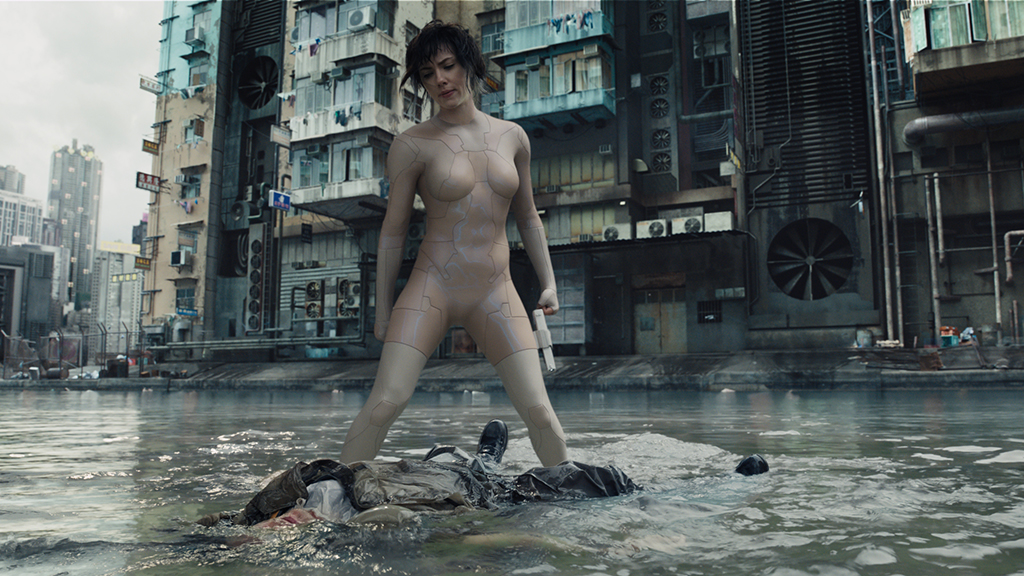

Ghost in the Shell is available today via digital download (as well as to pre-order on DVD, Blu-Ray, and Ultra HD 4K Blu-Ray) and, as the live-action film is jam-packed with super impressive visual effects, we thought we'd go have a chat with Guilaume Rocheron, the VFX master behind all the technical wizardry.
Here Rocheron talks about transforming Scarlett Johansson into Major - the film's kick-ass cyborg protagonist - with a high-tech thermoptic suit, the science behind the movie's super-impressive high-tech cloaking effects, as well as the importance his team placed on generating a believable future world in which the story takes place.
Before you get stuck in though, check out Ghost in the Shell's epic trailer now:
T3: First up, could you talk a little about how the film's sprawling, futuristic cityscapes were created?
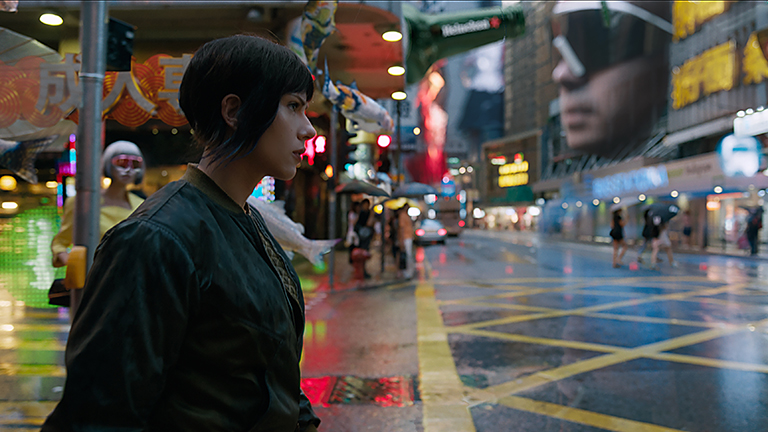
Guilaume Rocheron: Sure, no problem. The cityscapes are basically the world of Ghost in the Shell from a visual effects standpoint. And it was very much one of the first things that we talked about with Rupert the director. It was really one of our main focuses early on in the movie as you have to create a believable world if you want the audience to believe in the story.
Now the story of Ghost in the Shell is set in a future where human cyber enhancement and cyberisation is completely normal in society and blended with humans. From an audience standpoint you really have to buy into that world. It was really important for the director and for us to showcase the world with an overflow of information, an over-density of technological development. We wanted to show that technology has been slowly becoming more and more entwined in society and, in the film, humans too.
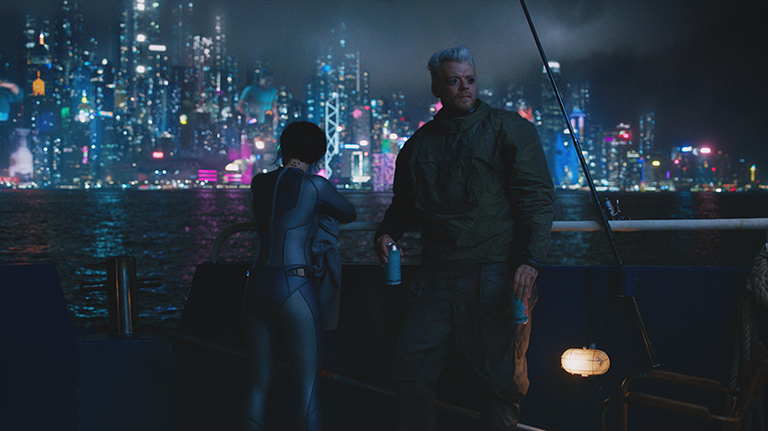
In terms of actually creating the city we went to shoot in Hong Kong to get base reference photography, as we really wanted to stay away from a future that would feel too digital and unlike our own. In our own real cities architecture has been built on architecture and kind of organically developed, so we really didn't want to create a world where you couldn't relate to it because it was so far fetched. So we went to shoot in the streets of Hong Kong and took a load of aerial shots too.
We knew of course that 2016 Hong Kong was not the city of the movie, but it gave us a canvas to start from to really build as much authenticity as we could. I mean, even though we knew we would replace most of the architecture and most of the vehicles, we realised it would lead to a far more believable world than if we built everything in a studio with green screen.
Get all the latest news, reviews, deals and buying guides on gorgeous tech, home and active products from the T3 experts
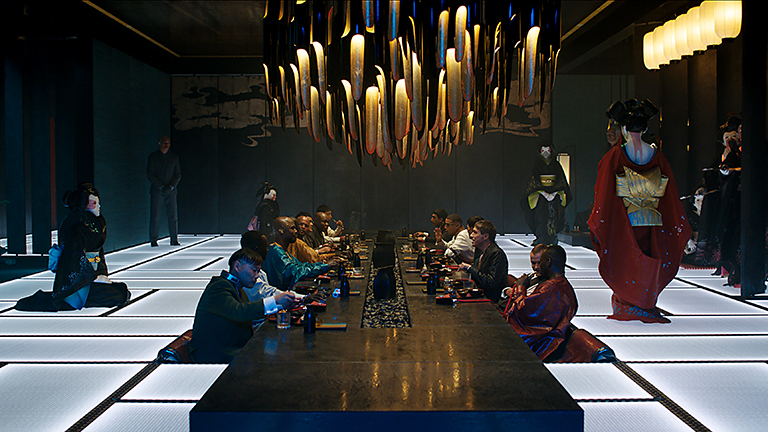
In terms of augmenting this base of authenticity, we worked hard on things like the huge holographic advertisements that spread everywhere, communicating that spread and encroachment of the digital world onto the human world. It was certainly a challenge for us to create those so they could be seamlessly integrated into the city. To do this we created a new kind of capture system that was essentially a dome of 80 cameras with which we recorded every advert. From there, we could feed the results into a computer and it was then capable of creating a fully volumetric, 3D holographic version. We could then add any lighting we wanted to that to allow it to blend into the city as desired.
Of course, that technology and those types of advertisements don't exist yet in the real world, so our challenge was to make it possible in the film.
T3: Some of the most impressive uses of visual effects in the film came in human augmentations. How did you make these look seamless and real?
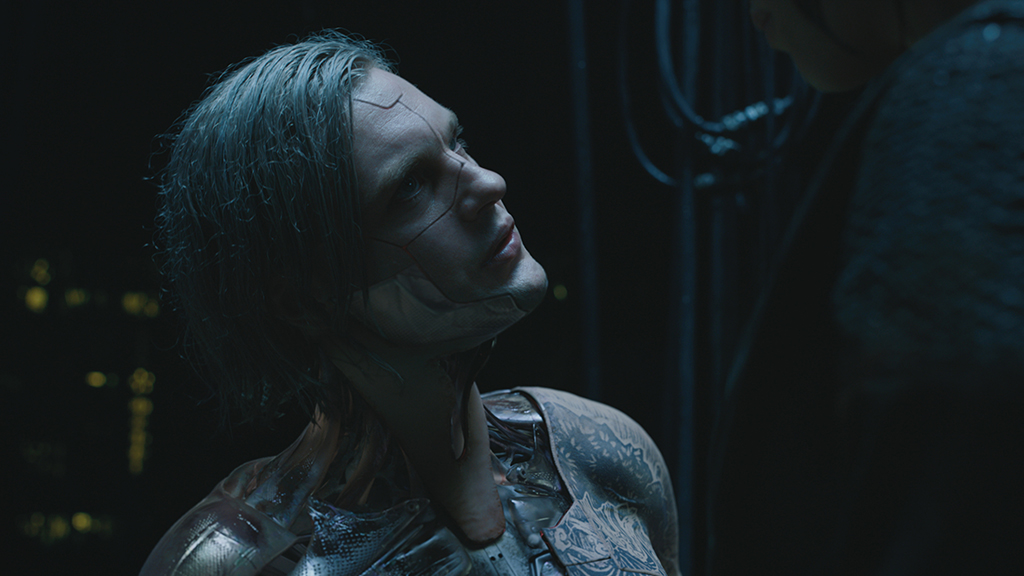
GR: Well first off we manufactured a lot of prosthetics and props. The reason for this is that prosthetics are really good at adding something on someone. The problem with them though is you cannot subtract - so if you have a robotic arm with prosthetics you can make it look like it has things on top someone's real arm, but you can't replace the arm entirely. So we looked at each augmentation on a part by part basis. Some things we could do all in prosthetics, others a mix of prosthetics and visual effects, and some things had to be all visual effects.
It was important to look at it this way for us and for the actors, as if you can give them something real to work with then they are going to understand better how they need to move. This was none more true than with the character of Kuze (seen above) who was a real hybrid of visual effects and practical effects. We went through a lot of design phases just to find out how we create a character like Kuze. How do we get the best, most impactful visual result?
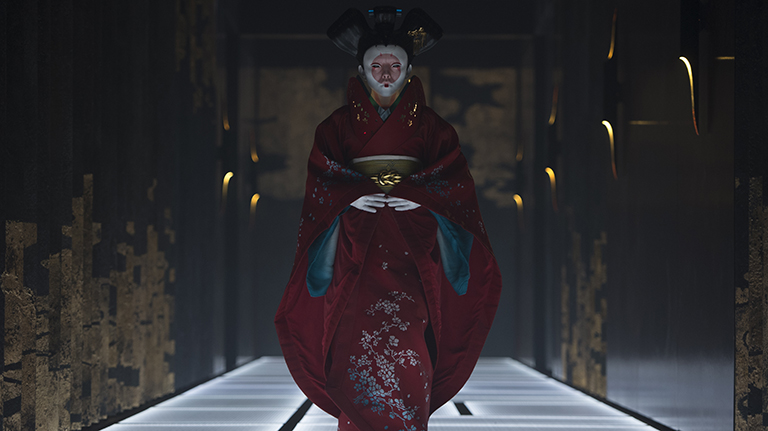
For example, Kuze's whole torso is exposed cybernetic muscle - so this had to be completely digital. His face has a lot of human parts but there are some panels that are removed, so we had to determine whether he should be a 100 per cent digital creation, or if we try and maintain aspects of the human actor portraying him. In the end Michael Pitt, the actor playing Kuze, gave a really interesting performance and when we saw the footage we decided we definitely needed to capture as much of that as possible.
So while we gave Kuze panel lines on the face, a crazy exposed body and various other augmentations in visual effects, we maintained a mix of CG and practical. As he is one of the most visually augmented and cyborg characters in the film though, Kuze is like 90 per cent visual effects, with everything essentially apart from the mouth, eyes and hair computer generated. As such, with Kuze, most of the time you are looking at a completely digital character.
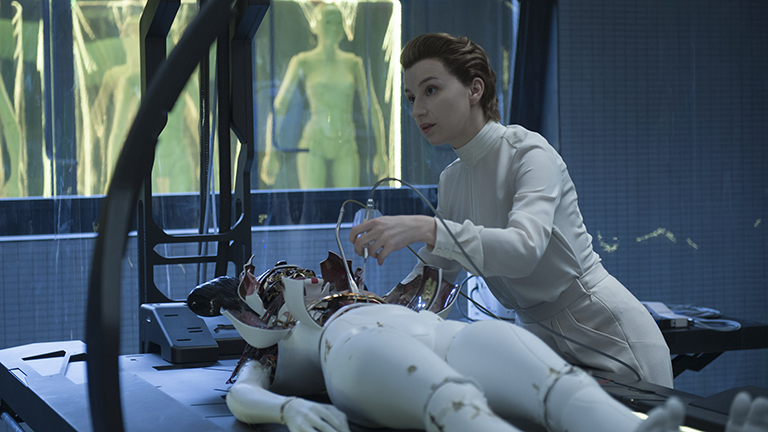
As with the city and the outside world, we really didn't want the audience to be constantly distracted by the effects and keep thinking that they were looking at a digital character. He's not an alien after all! He's a human character like major and the audience need to see that and relate to him in that way. So we really tried to blur the lines between the real and the unreal. I think that was a success as when you look at Kuze it is a little disturbing as you can clearly see he is human, you can see that in him, however, he is so much machine that it feels off.
T3: Major's thermoptic suit looked fantastic. How did you create it and its cool cloaking effect?
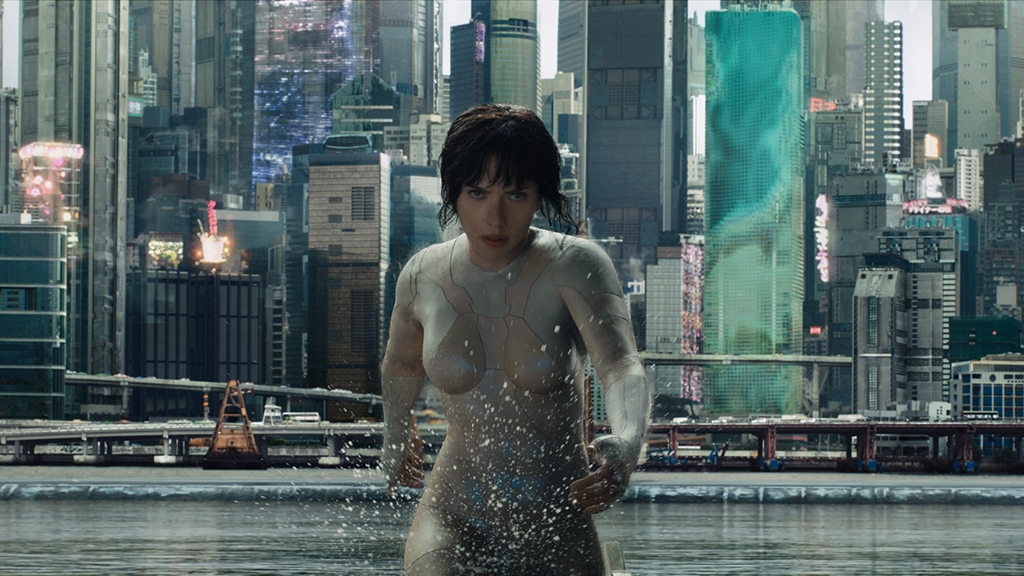
GR: Well, for the suit itself it was a mix of practical effects and a real-world creation. So at Weta Workshop they built this amazing silicon suit. It is really cleverly engineered as, unlike say superhero suits, the idea was to create a suit that looks like it has panel lines - so there is thickness to it - but equally it needs to be super thin to generate the effect that it is supposed to be her body and not a suit. So it needed to accentuate the panel lines and grooves, but at the same time be skin tight.
So the team at Weta really manufactured something quite beautiful because it was a full silicon suit that was as thin as possible, generates as few wrinkles as possible, and still showcase the panel lines.
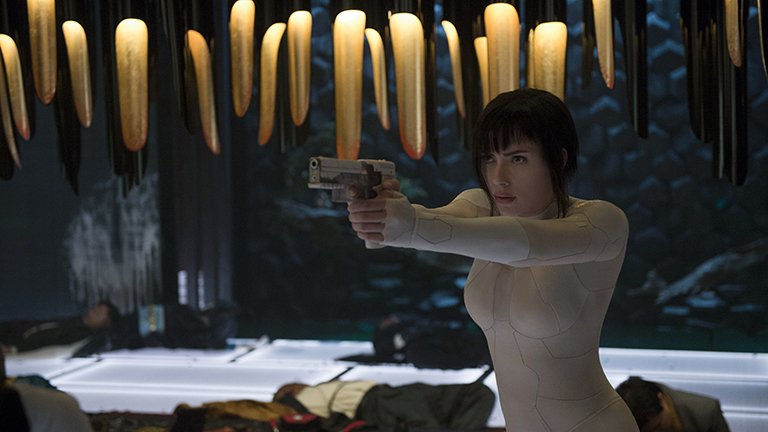
So from our point of view we always filmed Major in the suit and then in post-production we started to look at the edit and decided we needed to push it a notch further in some of the shots. So in some shots to really make the suit feel like it was her skin we created a digital version of the suit that was even thinner and have what I referred to as an oily sheath, a reflective quality that indicates that it is not human skin.
With regards to the invisibility cloaking effect that the suit is capable of, we spent a lot of time developing that, as we didn't want to do the classic invisible man trick where you just get a bit of a magnifying glass effect. No what we did was embrace the fact that in the world of Ghost in the Shell almost everyone is cyber enhanced. So everyone has cyber implants, many for their eyes and brain, leading to enhanced vision. And if that is true that means that what the thermoptic suit manufactures when Major cloaks is a digital trick. The thermoptic suit is trying to trick digital devices and not real eyes.
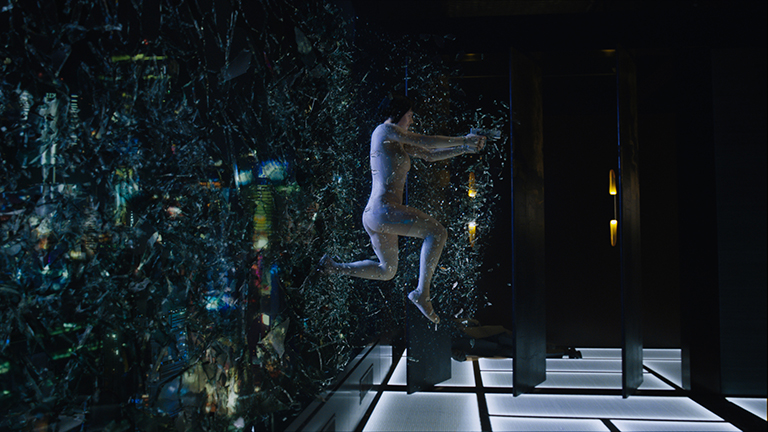
So our thinking was that if you had real eyes then Major would not really go invisible because it is not designed to trick that sort of vision. So for this we decided the suit essentially had a myriad of microscopic cameras embedded in its surface that films whatever is behind any surface's direction and then re-projects that in front of the suit, generating the effect.
It's like tricking a digital camera. There's a refresh rate and its trying to recreate pixels, which is why sometimes the suit generates the pixel-drag effect you can see in the film. Volumetric pixels are trying to reconstruct an image perfectly, however, they can't as Major is moving too fast. The refresh rate of the system can't keep up.
Obviously, we also wanted to keep Major visible in someway as otherwise the audience wouldn't be able to track where she was on screen.
T3: Lastly, for you what was the coolest thing you did while working on Ghost in the Shell?

GR: Wow, there was so many! It was creating the futuristic architecture, constructing the cool holographic advertising, building the cyber enhanced characters, and in general working on the effects both big and small that made the world and characters of Ghost in the Shell believable. To find all those tricks was crucial as there is nothing new about building a largely digital world, however, creating one that feels authentic is far harder. I think we succeeded with that and that is what I enjoyed the most.
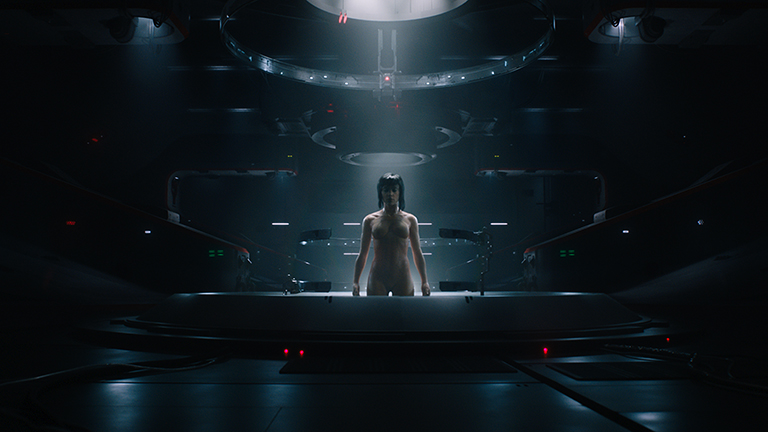
Ghost in the Shell is available to purchase via digital HD download now. For more information about the film and pre-order options for its physical disc releases head on over to the movie's official website.

Rob has been writing about computing, gaming, mobile, home entertainment technology, toys (specifically Lego and board games), smart home and more for over 15 years. As the editor of PC Gamer, and former Deputy Editor for T3.com, you can find Rob's work in magazines, bookazines and online, as well as on podcasts and videos, too. Outside of his work Rob is passionate about motorbikes, skiing/snowboarding and team sports, with football and cricket his two favourites.